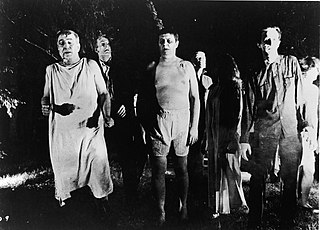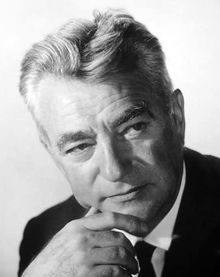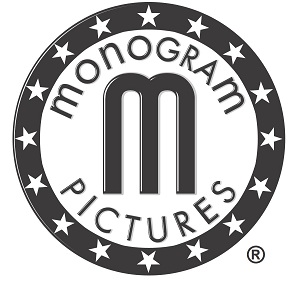
A B movie, or B film, is a type of low-budget commercial motion picture. Originally, during the Golden Age of Hollywood, this term specifically referred to films meant to be shown as the lesser-known second half of a double feature, somewhat similar to B-sides in the world of recorded music. However, the production of such films as "second features" in the United States largely declined by the end of the 1950s. This shift was due to the rise of commercial television, which prompted film studio B movie production departments to transition into television film production divisions. These divisions continued to create content similar to B movies, albeit in the form of low-budget films and series.

Major film studios are production and distribution companies that release a substantial number of films annually and consistently command the significant share of box office revenue in a given market. In the American and international markets, the major film studios, often known simply as the majors or the Big Five studios, are commonly regarded as the five diversified media conglomerates whose various film production and distribution subsidiaries collectively command approximately 80 to 85% of U.S. box office revenue. The term may also be applied more specifically to the primary motion picture business subsidiary of each respective conglomerate.

Republic Pictures Corporation was an American film studio corporation that originally operated from 1935 to 1967, based in Los Angeles, California. It had production and distribution facilities in Studio City, as well as a movie ranch in Encino.

Harry Cohn was a co-founder, president, and production director of Columbia Pictures Corporation.

Charles Vidor was a Hungarian film director. Among his film successes are The Bridge (1929), The Tuttles of Tahiti (1942), The Desperadoes (1943), Cover Girl (1944), Together Again (1944), A Song to Remember (1945), Over 21 (1945), Gilda (1946), The Loves of Carmen (1948), Rhapsody (1954), Love Me or Leave Me (1955), The Swan (1956), The Joker Is Wild (1957), and A Farewell to Arms (1957).

Monogram Pictures Corporation was an American film studio that produced mostly low-budget films between 1931 and 1953, when the firm completed a transition to the name Allied Artists Pictures Corporation. Monogram was among the smaller studios in the golden age of Hollywood, generally referred to collectively as Poverty Row. Lacking the financial resources to deliver the lavish sets, production values, and star power of the larger studios, Monogram sought to attract its audiences with the promise of action and adventure.

Producers Releasing Corporation was the smallest and least prestigious of the 11 Hollywood film companies of the 1940s. It was considered a prime example of what was called "Poverty Row": a low-rent stretch of Gower Street in Hollywood where shoestring film producers based their operations. However, PRC was more substantial than the usual independent companies that made only a few low-budget movies and then disappeared. PRC was an actual Hollywood studio – albeit the smallest – with its own production facilities and distribution network, and it even accepted imports from the UK. PRC lasted from 1939 to 1947, churning out low-budget B movies for the lower half of a double bill or the upper half of a neighborhood theater showing second-run films. The studio was originally located at 1440 N. Gower St. from 1936 to 1943. PRC then occupied the former Grand National Pictures physical plant at 7324 Santa Monica Blvd., from 1943 to 1947. This address is now an apartment complex.

Edgar Georg Ulmer was a Jewish-Moravian, Austrian-American film director who mainly worked on Hollywood B movies and other low-budget productions, eventually earning the epithet 'The King of PRC', due to his extremely prolific output for the Poverty Row studios. His stylish and eccentric works came to be appreciated by auteur theory-espousing film critics in the years following his retirement. Ulmer's most famous productions include the horror film The Black Cat (1934) and the film noir Detour (1945).

The B movie, whose roots trace to the silent film era, was a significant contributor to Hollywood's Golden Age of the 1930s and 1940s. As the Hollywood studios made the transition to sound film in the late 1920s, many independent exhibitors began adopting a new programming format: the double feature. The popularity of the twin bill required the production of relatively short, inexpensive movies to occupy the bottom half of the program. The double feature was the predominant presentation model at American theaters throughout the Golden Age, and B movies constituted the majority of Hollywood production during the period.
Grand National Films, Inc was an American independent motion picture production-distribution company in operation from 1936 to 1939. The company had no relation to the British Grand National Pictures.
Majestic Pictures was an American film production and distribution company active during the 1930s. Under the control of Larry Darmour, the company specialized in low-budget productions and was one of the more stable Poverty Row outfits during the period. It also gained a reputation for producing higher quality films than was common amongst similar studios, possibly due to a business arrangement the company had with the major studio MGM.
Lawrence J. Darmour (1895–1942) was an American film producer, operator of Larry Darmour Productions from 1927, and a significant figure in Hollywood's low-budget production community.

Virginia Van Upp was an American film producer and screenwriter.
Tremlet C. Carr was an American film producer, closely associated with the low-budget filmmaking of Poverty Row. In 1931 he co-founded Monogram Pictures, which developed into one of the leading specialist producers of B pictures in Hollywood.
Maurice Henry Hoffman was an American studio owner and film producer. In the 1920s and 30s, Hoffman made films for seven different studios. He is particularly associated with Poverty Row where studios he founded -Allied Pictures, Liberty Pictures and Tiffany Pictures produced mainly low-budget B pictures.

Cohn-Brandt-Cohn (CBC) Film Sales Corporation was an American film studio that was founded on June 19, 1918 by brothers Harry and Jack Cohn and their friend and co-worker at Independent Moving Pictures, Joe Brandt, with capital of $250. The headquarters were at 1600 Broadway in New York.
William Nelson Austin was a Canadian-American film editor. He was nominated for an Academy Award in the category Best Film Editing for the film Flat Top.










